How To Connect Bose Noise Cancelling Headphones To Iphone
If the last year has taught us anything, it's the value of great noise-canceling headphones. They block out external noise like your neighbor's lawn mower when you're working from home and help your kids attend online classes with limited distractions. If you're here, you're either looking to replace an old pair of headphones or dive into the noise cancelation pool for the first time. There are a lot of options out there -- from over ear headphones to noise canceling earbuds -- and I'm here to help you narrow down your choices.
So, where to start? When it comes tonoise-canceling headphones that block out background noise and ambient sound, Bose headphones have been the audio gold standard for years. But other headphone-makers have steadily chipped away at Bose's lead, and it's a competitive category with a multitude ofnoise-canceling options at various prices, including Apple's new high-end AirPods Max, Sony's excellent WH-1000XM4, Bose's Noise Cancelling Headphones 700 and QuietComfort Earbuds. Whether you want to use your noise-canceling headphones tolisten to music or just block out unwanted noise, there are many superb models to choose from.
Below, I've rounded up all the best noise-canceling headphones available, all of which I've fully reviewed or used hands-on over a period of time. I update this list regularly as I review more headphones.
Best new noise-canceling earbuds
Sony WF-1000XM4
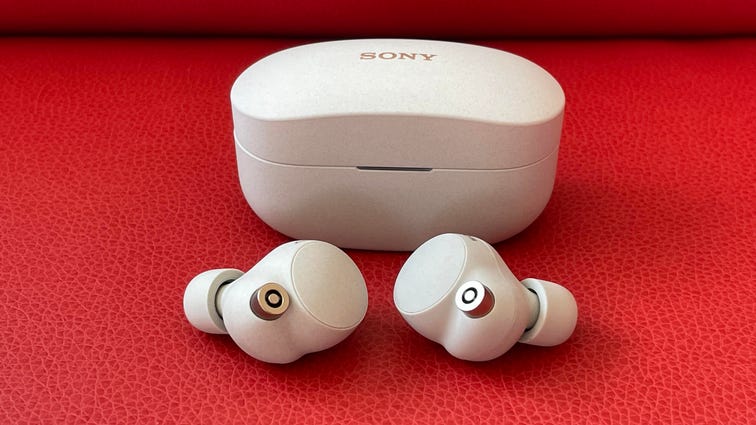
David Carnoy/CNET
No earbuds are perfect, of course, and not everybody will love the fit of the Sony WF-1000XM4 buds or be able to afford their high price ($280). But if you're looking for great-sounding earbuds with great noise canceling, solid voice-calling capabilities and good battery life, these buds check all the boxes.
Bose's QuietComfort Earbuds also have top-notch noise canceling and sound quality, but the Sony is right there with the Bose for noise canceling (and some might say it's a touch better in that department), but the Sony offers slightly better sound quality and also has a more compact design, particularly for the case (though the Sony buds certainly aren't small).
Read our Sony WF-1000XM4 review.
Best all around over-ear
Sony WH-1000XM4
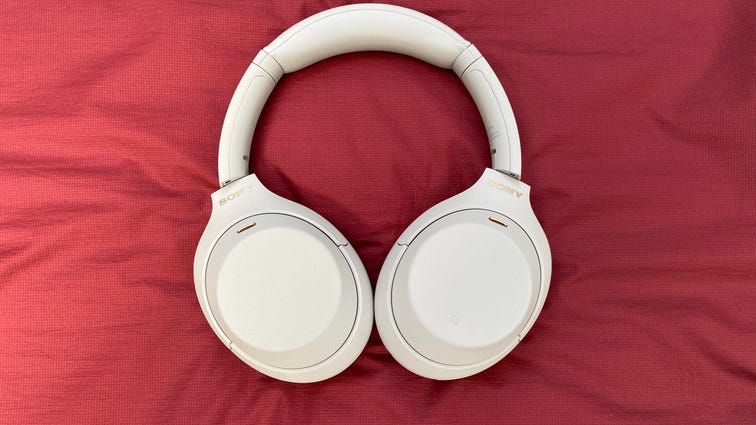
David Carnoy/CNET
Dec 2020
Sony's earlier WH-1000XM3 model was great. But if it had a weakness, that was voice calling, particularly in noisier environments. The WH-1000XM4 model has improved in that area and also adds multipoint Bluetooth pairing so you can connect to two devices -- such as your phone and PC -- at the same time. That means that if a call comes in while you're using the headphones with your computer, the audio will switch to your phone when you answer the call.
The Bose Noise Cancelling Headphones 700 probably still have a slight edge for voice calls, but the 1000XM4 headphones are arguably a tad more comfortable and also have some other slight improvements to noise cancellation and sound that make this model a great all-around choice. After launching at $350, they've regularly discounted to as low as $278, so look for them on sale.
Read our Sony WH-1000XM4 review.
Improved QuietComfort
Bose QuietComfort 45
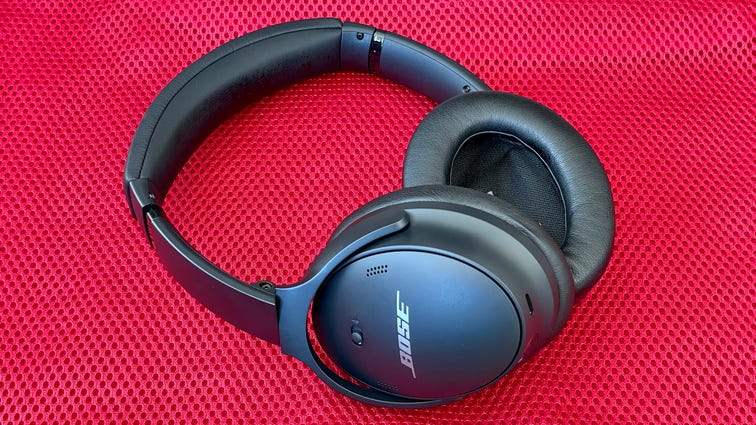
David Carnoy/CNET
The Bose QuietComfort 45 essentially looks the same as its popular predecessor, the QuietComfort 35 II, with the biggest design difference being a USB-C port in place of the older Micro-USB. (At 238 grams, the QC45 weighs just 3 grams more than the QC35, which should be imperceptible.) And while the Bose 700 have plenty of fans, a lot of people (including me think this QuietComfort design is slightly more comfortable and the headphones fold up and fold flat. It's arguably the most comfortable pair of headphones out there.
They also sound very similar to the QC 35 II, with no change to the drivers. Where you'll see an improvement is with the noise cancellation (there's a transparency mode), which very well could be the best out right now. According to Bose, there's a new electronics package that powers the new ANC system, which now better muffles "unwanted sounds in the midrange frequencies" (voices) that you'd "typically find on commuter trains, busy office spaces and cafes."
I found that to be true and give these the slight edge over both the Headphones 700 and Sony WH-1000XM4 for noise canceling. That said, you can't adjust the level of noise canceling like you can with those models, which offer a more robust feature set, particularly the Sony. You also can't tweak the sound in the app; there's no equalizer settings.
The headset performance has also improved, with better noise reduction during calls. And these offer multipoint Bluetooth pairing. That means you can pair the QC45 with two devices simultaneously -- such as a smartphone and PC -- and switch audio as needed. They're equipped with Bluetooth 5.1 and support the widely compatible AAC audio codec but not AptX.
While these have advantages over the Headphones 700 and Sony WH-1000XM4 and do sound quite good, those models sound slightly better: The 700 is slightly more natural sounding and tuned more for audiophiles, while the Sony has more dynamic bass. So that makes choosing between these three models that much more difficult.
Excellent for making calls
Bose Noise Cancelling Headphones 700
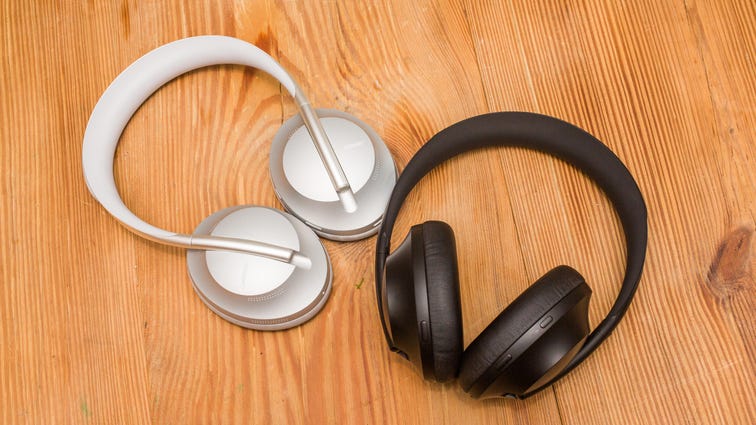
Sarah Tew/CNET
The Bose Noise Cancelling Headphones 700, the long-awaited successor to Bose's QuietComfort 35 II model, may not be a quantum leap forward, but these headphones offer slightly better sound and noise cancellation along with top-notch headset performance for voice calls. They're a strong all-around audio performer with up to 20 hours of battery life and a more durable design than their predecessor (some find the QuietComfort 35 II headphones slightly more comfortable).
At launch, they cost $400, but they've recently come down in price. We've seen the white version dip as low as $299 while the black and silver versions have hit $340. That said, the new Sony WH-1000XM4 headphones, their closest competitor, has also seen nice discounts.
Read our Bose Noise Cancelling Headphones 700 review.
Pure premium
Bang & Olufsen Beoplay EQ
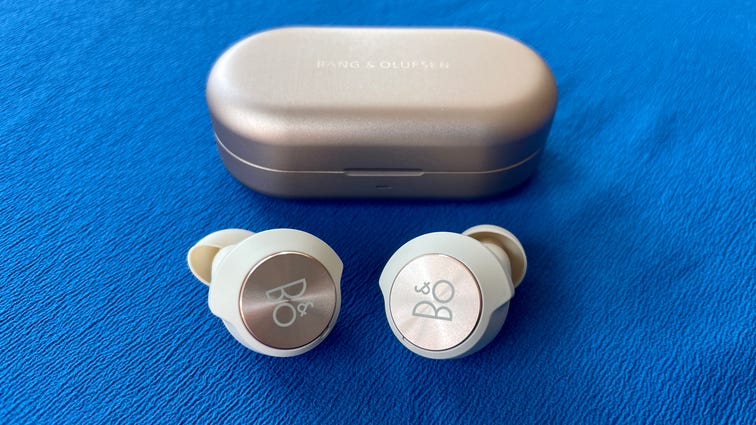
David Carnoy/CNET
Bang & Olufsen's earlier Beoplay E8 earbuds were good, but underwhelming for their high price. The new Beoplay EQ are also rather expensive, but they're among the very best true wireless earbuds available right now, with top-notch sound, adaptive noise canceling and a natural sounding transparency mode. Multipoint Bluetooth pairing means you can simultaneously connect them to a smartphone and computer. They have three microphones on each bud and are good for voice calling, though not exceptional.
Needless to say, the premium design elements are here: The aluminum-shelled case opens and closes with precise smoothness, and the buds themselves have an aluminum accent on the outer surface where the touch controls live.
The buds are fairly large and do stick out of your ears like premium buds from Sony and Sennheiser. They fit me comfortably and securely and were suitable for sporting activities, with an IP54 splash-proof rating. Battery life is rated at around 6.5 hours at moderate volume levels, and you get an extra two charges from the case, which has USB-C and wireless charging.
The sound is big and dynamic with deep, well-defined bass and a wide soundstage. The mids sound natural and the treble has nice sparkle to it. They're a pleasure to listen to and among the best-sounding true wireless earbuds. I didn't experience any listening fatigue over longer listening sessions. There is aptX for devices that support the aptX audio code; these have aptX Adaptive and use Bluetooth 5.2.
Are they better than the Sony WF-1000XM4, which cost $120 less? The answer to that will depend partially on how well they fit your ears and how good a seal you get from the included ear tips. I personally ended up getting the best fit using Sennheiser's large tips, which work best for my ears. They're a great set of earbuds if you can afford them. Just buy them from a retailer that has a good return policy in case you're not satisfied.
Best sound under $100
Anker SoundCore Life Q30
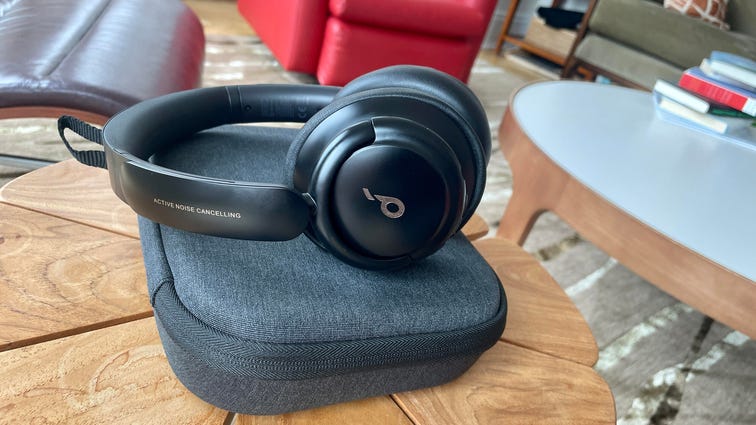
David Carnoy/CNET
As far as sound, comfort level and build quality, you'd be hard-pressed to do better than Anker's SoundCore Life Q30 for the money. It doesn't quite have the clarity or bass definition as some of the top premium models, but it's less than a third of the price and gets you about 75% of the way there in terms of sound (it's well balanced overall with punchy bass and there's an app that allows you to tweak the sound). Noise canceling is good for the price, though not up to the level of the Sony WH-1000XM4 or Bose Noise Cancelling Headphones 700. Battery life is rated at an impressive 40 hours with USB-C charging.
The only area where the Q30 falls a little short is for voice calls. It picks up your voice fine in quieter environments but it just doesn't reduce background noise all that well.
Compared to the Q20 (see below), the Q30 does offer improved sound (it's not a huge difference, but it definitely is a notch up) and a more premium design. Anker often offers the Q20 at a $10 discount at Amazon. Eventually, we should see something like that on the Q30.
Top-notch true-wireless noise canceling
Bose QuietComfort Earbuds
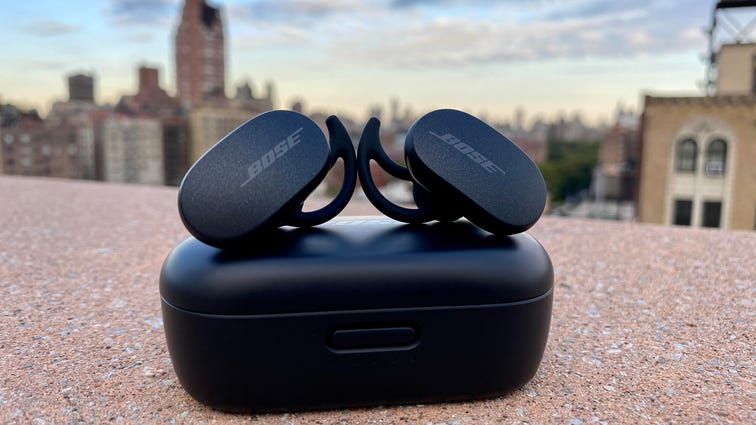
David Carnoy/CNET
Dec 2020
It took Bose quite a while to get them into stores, but the new $279 noise-canceling QuietComfort Earbuds are finally here. In many ways, they're excellent true wireless earbuds, particularly when it comes to their sound and to their noise canceling, which is arguably the best out there right now in a set of earbuds. In performance they clearly have a leg up on Apple's best-selling AirPods Pro true wireless noise-canceling buds. However, the AirPods Pro's smaller design, somewhat more comfortable fit and superior voice-calling capabilities make it hard to declare the Bose the straight-up champ. Ultimately, it depends on what your priorities are.
Read our Bose QuietComfort Earbuds review.
High-end option
Apple AirPods Max
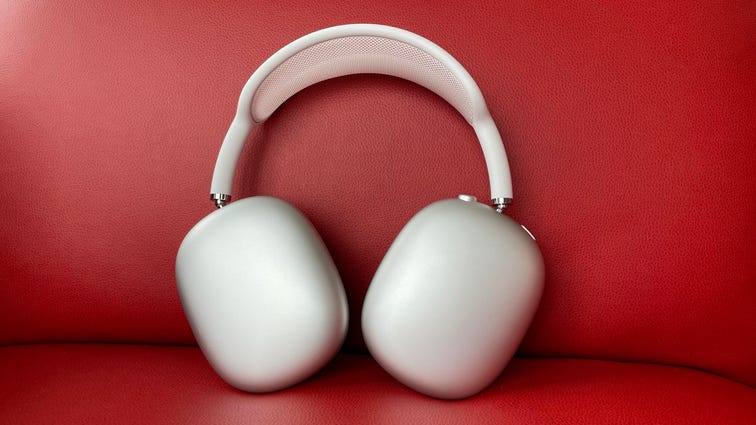
David Carnoy/CNET
Yes, they're expensive, but the AirPods Max deliver richer, more detailed sound than lower-priced competitors from Bose and Sony. They also feature arguably the best noise canceling on the market along with premium build quality and Apple's virtual surround spatial audio feature for video watching. While they're heavy, they manage to be surprisingly comfortable, though I did have to adjust the mesh canopy headband to sit a little more forward on my head to get a comfortable secure fit when I was out walking with them. They should fit most heads well, but there will be exceptions.
Read our Apple AirPods Max review.
Most discreet
Apple AirPods Pro

Sarah Tew/CNET
Nov 2019
Even if they don't sound quite as magical as you'd hope a $249 model would, the Apple AirPods Pro still manage to be a great pair of true-wireless earphones with noise cancellation. That's largely due to their winning design and fit, improved bass performance and effective noise canceling -- and now they've been updated with spatial audio, a new virtual-sound mode for watching movies and TV shows (only works with iPhones and iPads running iOS 14).
They're an excellent choice when you want to make a call or listen to music during your workout. Yeah, they're expensive at $250, but the good news is they tend to sell in the $190 to $210 range.
Read our Apple AirPods Pro review.
Better-fitting Samsung
Samsung Galaxy Buds 2

Drew Evans/CNET
Available in four colors, the Samsung Galaxy Buds 2 hew more closely to the newer Galaxy Buds Pro and Galaxy Buds Live, both of which have eye-catching glossy curved designs and the same compact charging case as this new model. In fact, it's the Buds 2's design and fit -- they're 15% smaller and 20% lighter than the Buds Plus -- that make them a potentially more likable alternative to the better-sounding Buds Pro.
Like the Buds Pro, the Buds 2 are equipped with active noise canceling. That means all the latest Galaxy Buds models now feature some form of active noise canceling, though it's slight with the Buds Live, which have an open design sans ear tips. While the Buds 2 look more like shrunken versions of the Buds Pro, I found them more akin to the Buds Live in that they barely stick out of your ears and are fairly discreet. Because they sit more flush with your ears -- and have that curved design -- they also pick up less wind noise. They're IPX2 sweat-resistant.
Read our Galaxy Buds 2 review.
Budget standout
Edifier TWS 330NB
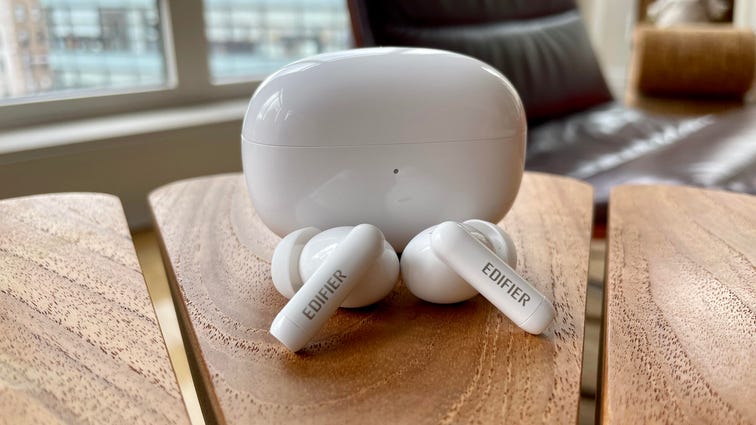
David Carnoy/CNET
Edifier has a few different new true-wireless earbuds and most, including the TWS 330NB, are very good values. While the TWS 330NB buds are missing a sensor that automatically pauses your music when you take them out of your ears, they feature very good sound quality for the money, decent active noise canceling with a transparency mode, and solid voice calling (they have three microphones in each bud for noise canceling and noise reduction during calls).
They fit my ears well -- they're essentially AirPods Pro clones -- and while the touch controls are a little limited, they are programmable using the Edifier Connect app for iOS and Android (you can also set the level of touch sensitivity). They have an IP54 rating, which means they're splash- and dust-proof, and battery life is rated at four hours with noise canceling on and five hours with it off (at moderate volume levels). That's only OK, but you do get an additional two charges in the charging case.
AirPods Max competitor
Bang & Olufsen Beoplay HX
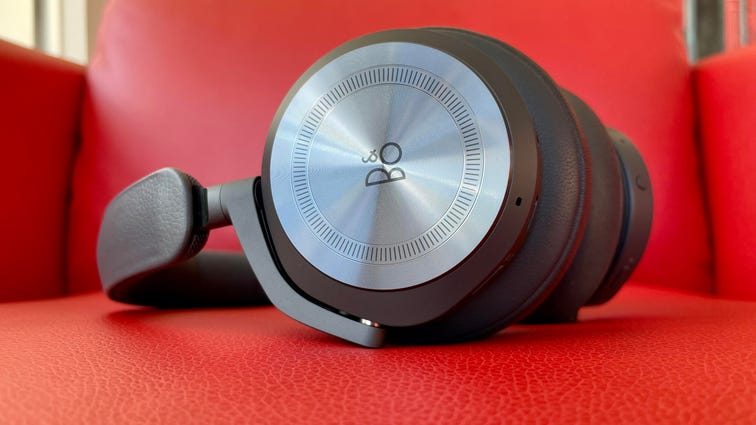
David Carnoy/CNET
Bang & Olufsen's Beoplay HX is the successor to the company's H9 series headphones (that X is a Roman numeral 10) and like those earlier H9 models, the HX carries a list price of $500 (some colors are discounted at Amazon). That price point makes it a direct competitor with Apple's AirPods Max, a heavier headphone at 384.8 grams vs. 285 grams for the HX. I don't know if the HX is more comfortable than the AirPods Max, but I found the two models pretty equal in the comfort department over longer listening sessions and these do feature the usual swanky B&O lambskin covered memory foam ear pads.
The HX has custom 40mm drivers, Bluetooth 5.1 and support for Qualcomm's aptX Adaptive (that includes AptX HD) for high-resolution wireless streaming when you combine an aptX-enabled Android device with certain music streaming services like Qobuz.
Their sound measures up well to the AirPods Max's sound, with deep, well-defined bass, natural sounding mids (where vocals live) and inviting detail in the treble (the sound is overall well-balanced). If you want to push the treble or bass, you can tweak the EQ in the Bang & Olufsen app for iOS and Android and give the headphones a warmer or brighter profile.
While these are expensive, they offer more accurate sound than the Sony WH-1000XM4. Their noise canceling is also very good and voice-calling capabilities are also quite solid. Additionally, they offer multipoint Bluetooth pairing so you can connect them with a smartphone and PC simultaneously (Microsoft Swift Pair enabled for Windows machines) so you can easily switch between the two (the Sony WH-1000XM4 also has this feature). Battery life is rated at up to 35 hours with noise canceling on and 40 hours with it off. Those are excellent numbers.
Earlier Bang & Olufsen's models included a soft case (a pouch really), but the HX comes with a hard case. As I said, it's expensive, but the small improvements over earlier flagship Bang & Olufsen noise-canceling headphones help make the HX's case as a worthy alternative to the AirPods Max.
Best sound for true wireless
Bowers & Wilkins PI7
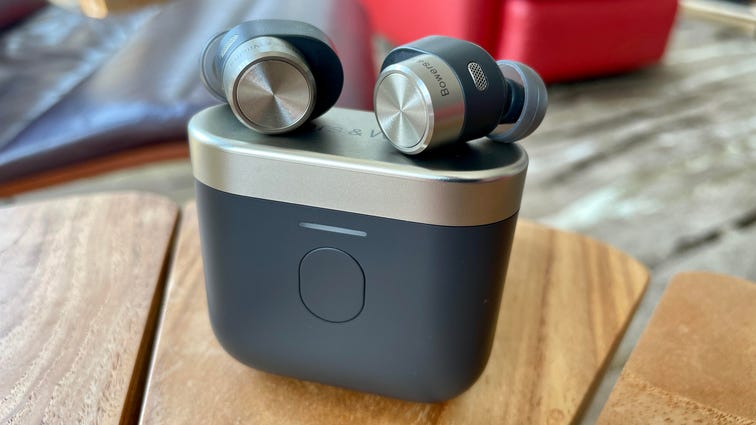
David Carnoy/CNET
After a long wait, Bowers & Wilkins has finally released a couple of sets of true wireless earbuds -- the PI7 ($400) and PI5 ($250) -- both of which are excellent and feature active noise canceling along with a transparency mode. The flagship PI7 has a different driver design and sounds slightly more detailed and refined with a little more bass energy. They both sound excellent, but if you're looking for the absolute best sounding set of earbuds, the PI7 are arguably just that, besting the Sony WF-1000XM4 by a small margin (they also sound slightly better than the excellent Sennheiser Momentum True Wireless II and Master & Dynamic MW08).
While the PI7's noise canceling is quite decent, the Sony's noise canceling is superior. I also thought the Sony did better with voice calling (it has better noise reduction so people can hear you better in a noisier environments) and it has better battery life.
The PI7's case does transform into a Bluetooth transceiver, so you can plug it into your laptop for Qualcomm aptX streaming or an in-flight entertainment system. The PI7 supports aptX Adaptive wireless transmission (which includes the AptX HD codec) from compatible mobile devices, allowing for "high-resolution music transmission from suitable streaming services, such as Qobuz."
They're IPX54 splashproof and have 4 hours of battery life with noise canceling on (that's a little disappointing), plus an extra 4 charges from the case.
The PI5 buds also sound excellent and are a touch lighter than the PI7. At $250, the PI5 competes directly with the $280 Sony 1000XM4. As with all in-ear headphones, you have to try them to see how they fit your ears. Bowers & Wilkins' buds may fit your ears better than Sony's and vice versa.
Read our Bowers & Wilkins PI7 first take.
New mid-range Sennheiser
Sennheiser CX Plus
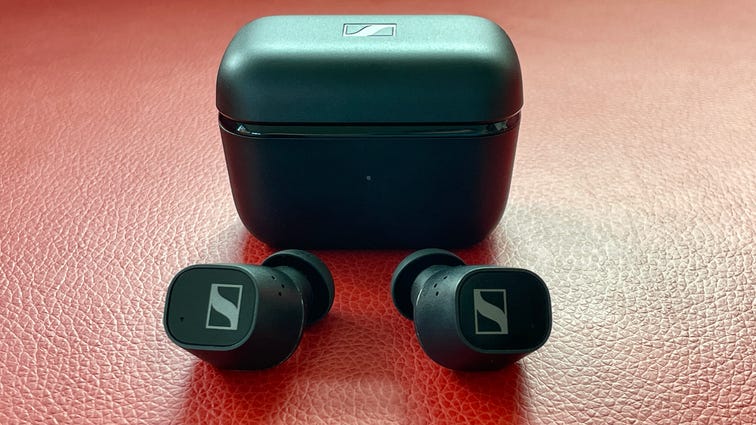
David Carnoy/CNET
The Momentum True Wireless II remain Sennheiser's flagship true-wireless earbuds. But shortly after the release of the CX ($130), Sennheiser's second-generation midrange buds, the company followed up with the CX Plus, which add noise canceling. They look nearly identical to the standard CX buds but have a glossy black finish on the touch-sensitive exterior surface -- cosmetically, they're more akin to the older and slightly larger CX400BT.
I like the CX for the money, and the CX Plus delivers the same excellent sound while rounding out the feature set with active noise canceling and a transparency mode. Battery life is rated at up to eight hours at moderate volume levels and these are splash-proof, with an IPX4 rating. They do stick out of your ears a bit.
The noise canceling isn't quite as good as the Sony WF-1000XM4's, but I thought it was effective and the headset's performance was decent, though not stellar. These are all-around solid noise-canceling earbuds that can count sound quality as their biggest strength.
Swanky true wireless
Master & Dynamic MW08
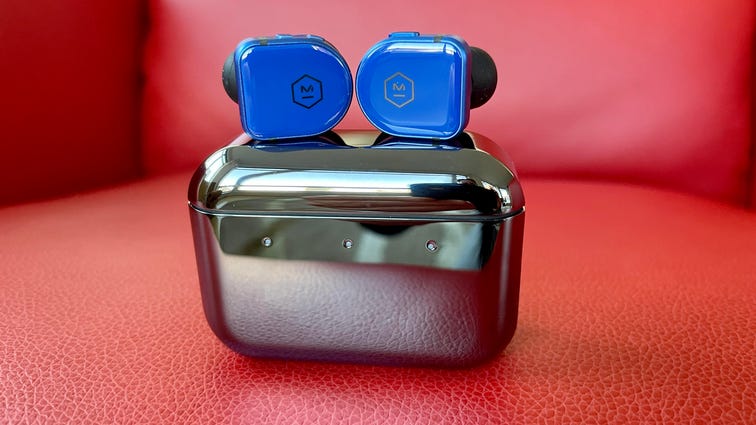
David Carnoy/CNET
Master & Dynamic's earlier MW07 and MW07 Plus delivered top-notch sound for true wireless, but they were a little lacking in the features department and weren't so great for making calls. The new-for-2021 MW08 offers some significant improvements, including the addition of solid noise canceling and call quality, that makes it one of the top models for 2021. Alas, it's expensive at $299.
Battery life has improved a bit (up to around 12 hours of battery life at 50% volume versus 10 hours for the MW07 Plus), and the earbuds are equipped with Bluetooth 5.2, active noise cancellation with three microphones on each earbud (noise reduction during calls isn't up to the level of the AirPods Pro but overall call quality has improved). The noise canceling on the MW07 Plus was pretty weak; the MW08's is much more effective.
You can opt for two levels of noise cancellation in the new M&D Connect app for iOS and Android, as well as two levels of transparency that lets you hear the outside world. The app currently has no way to tweak the sound profile (I'm OK with that because the sound profile is just fine for my tastes) and the earbuds have a physical button on each bud to control playback, not touch controls.
These buds may not fit everyone's ear equally well, but they certainly have a distinct look, as well as excellent sound and a great listening experience if you can get a tight seal (I was able to get a secure fit with the largest tip). They deliver more of an audiophile sound profile, with smooth, well-balanced sound and well-defined bass. This model has new 11mm drivers, which add a bit of punch to the bass and a touch better clarity. The MW08 works well with all genres of music.
Available in a variety of color options, like their predecessors, the MW08 includes a swanky stainless-steel charging case (it charges via USB-C) that's compact but carries more weight than your typical buds cases. You also get a secondary pouch for safekeeping (yes, the charging case can get scratched up if you leave it in a bag).
These truly wireless earbuds now support both the aptX and AAC audio codecs and have an extended range of more than 20 meters, according to Master & Dynamic. They have an IPX5 water-resistance rating, which means they can withstand a sustained spray of water.
Best over-ear under $50
Anker SoundCore Life Q20
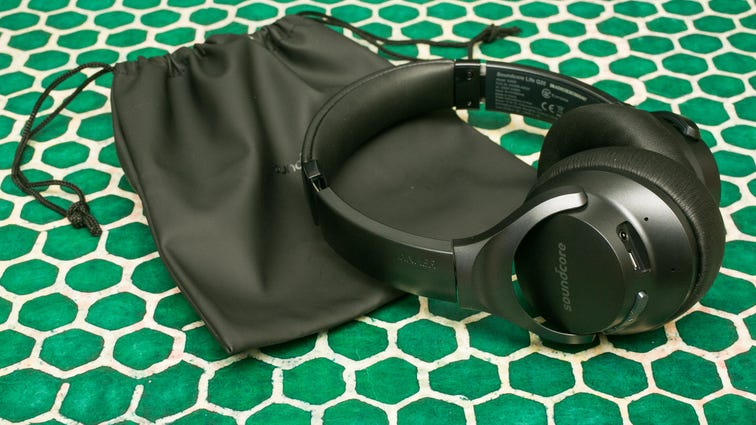
Sarah Tew/CNET
Anker's SoundCore Life Q20 headphones are arguably the best value in the category of noise-canceling headphones. Not only do these over-ear headphones sound quite decent for their regular list price of $60 (they often sell for $10 less), but they're also comfortable to wear thanks to the secure earcups.
No, they don't sound as good as premium Bluetooth headphones from Sony and Bose, but the audio quality is pretty good, which is all you can ask of noise-canceling headphones at this price. The sound quality is fairly well balanced with a reasonable amount of clarity and plump bass that's not bloated or muddy (there's a bass boost or BassUp mode if you want an extra helping of bass with your music). Also, the noise cancellation is acceptably effective and they're solid as a headset for making calls. Battery life is good at 40 hours. A simple carrying pouch is included.
Good value true wireless
Earfun Free Pro
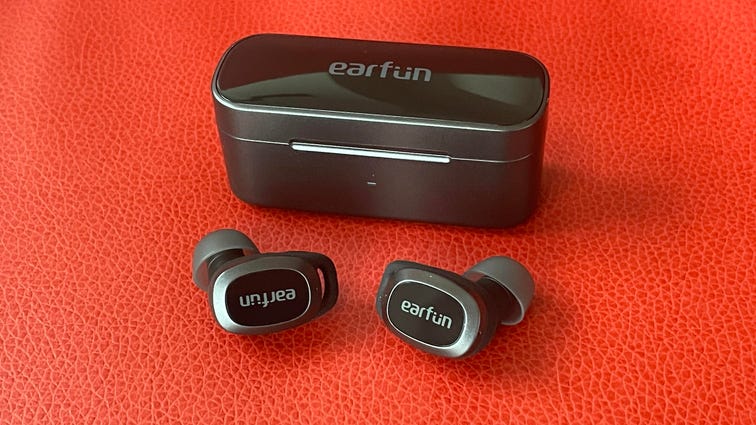
David Carnoy/CNET
From a design standpoint, the Earfun Free Pro seems identical to the Fiil T1XS. The Earfun Free Pro has better features, however, including active noise cancellation with a transparency mode, wireless charging and Bluetooth 5.2 (apparently, in some parts of the world there's a Fiil T1X Pro that adds noise canceling). They're rated for seven hours of battery life without the noise-canceling function on, or about six hours with it on. They're IPX5 water-resistant, which means they can withstand a sustained spray of water.
These sound pretty impressive for their moderate price, with decent clarity and bass, and I recommend them and a few other sub-$100 models to folks looking for budget true wireless noise-canceling earbuds. These also work pretty well for making calls. Don't expect stellar noise canceling, but it is somewhat effective. They list for $60 but on Amazon, there's often an instant coupon that brings the price down by a few bucks.
Old-school newcomer
Yamaha YH-E700A

David Carnoy/CNET
Yamaha has dipped in and out of the headphone arena in the last several years and its new-for-2021 YH-E700A is an all-around solid noise-canceling entry that has a bit of a retro design with its large ear cups that give you that Princess Leia look when wearing them. I did find them comfortable to wear -- they have deep ear pads -- and their sound grew on me the longer I listened to them (you can listen to them for longer sessions without getting listening fatigue). Battery life is excellent at 35 hours with noise canceling on and these support the aptX Adaptive audio streaming codec with compatible devices. Currently, the list of those devices isn't long.
Their adaptive noise canceling is good and they work decently for making calls, although their noise reduction was only OK when I took them out in the streets of New York to make some calls (you can hear your voice in the headphones as you talk, which is good).
Ultimately, the YH-E700A's sound is what makes them worth considering. They're slightly on the warmer side, with deep, powerful bass and nicely detailed treble (it has some sparkle to it). They also sound relatively open with a pretty wide soundstage.
They list for $350, which is too expensive, but they're down to $200. They fold flat, but their carrying case is wider than the cases you get with the Sony or Bose noise-canceling headphones.
Excellent for working from home
Microsoft Surface Headphones 2

David Carnoy/CNET
Microsoft's over-ear noise-canceling Surface Headphones 2 were released earlier in 2020, and the biggest change from their predecessor is the price: The original Surface Headphones launched at $350, while the Headphones 2 cost $250. Like the original, there's a lot to like about this second-gen model. While they've lost their hands-free Cortana voice control feature (a change no one will lament) and the sound quality hasn't improved (it's quite good but not stellar), the combination of some small design tweaks, better battery life, upgraded Bluetooth and the new lower price helps bump their rating up and make them more recommendable.
Their multipoint Bluetooth pairing capability allows you to pair them with two devices at the same time, such as a computer and a phone, and quickly switch the audio from each device to the headphones. That's an appealing feature from a work-from-home standpoint, and these also work well for making voice calls.
Read our Microsoft Surface Headphones 2 review.
Good for runners
Sony WF-SP800N
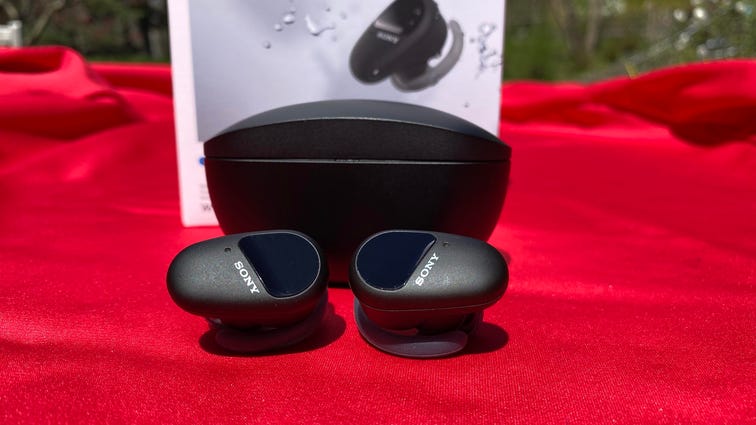
David Carnoy/CNET
Unlike the WF-1000XM3, Sony's new WF-1000XM4 earbuds are water-resistant. But if you don't want to spend $279 for Sony's latest and greatest buds -- they are very good -- Sony's more affordable WF-SP800N "sports" earbuds are a decent alternative and sometimes sell for less than $100 in certain colors.
No, the noise canceling and sound aren't as good as you get from the WF-1000XM4 (or WF-1000XM3, for that matter), but there's still a lot to like about these buds, including great sound, solid noise canceling and good call quality. It's definitely a nice upgrade over the WF-SP700N, which came out in 2018, and the "arcs" (sports fins) lock the earbuds in your ears. Just make sure you get a tight seal from one of the included ear tips, or else both the sound and noise canceling will be lackluster.
Read our Sony WF-SP800N review.
Impressive sound
Sennheiser Momentum 3
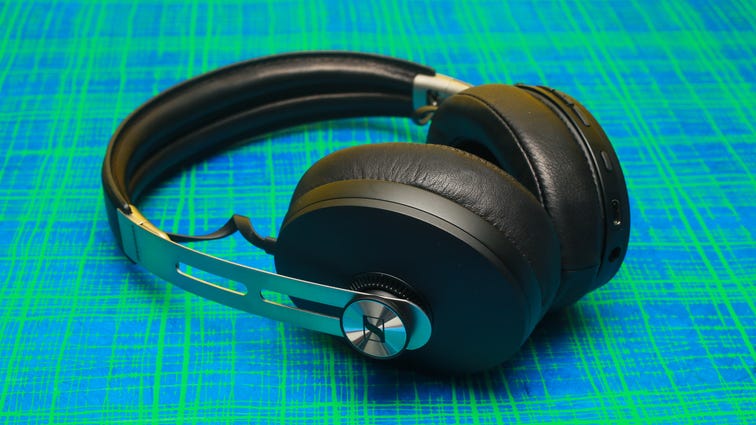
Sarah Tew/CNET
When it comes to premium noise-canceling headphones, Bose and Sony have been the dominant players over the last few years. But Sennheiser's Momentum 3 Wireless, which came out in late 2019, deserve some attention, particularly from fans of the Momentum line. They list for $400, but have come down in price (you can sometimes find them for closer to $300).
Not only does this model feature improved noise-canceling features and excellent sound and audio, but it also performs well as a headset for making calls. While in noise cancellation and comfort level the Momentum 3 headphones don't quite measure up to the Sony WH-1000XM4, I appreciated the nicely padded earcups covered with sheep leather and had no trouble rocking them for a 2-hour music listening session, to say nothing of the battery life.
Read our Sennheiser Momentum 3 first take.
Under-the-radar Sennheiser
Sennheiser PXC 550-II
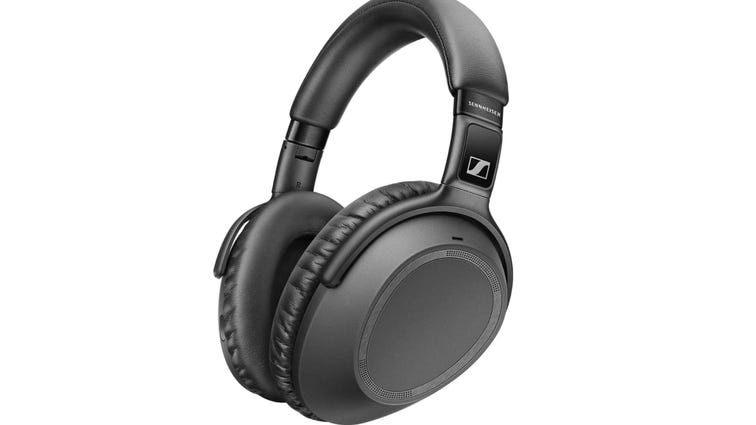
Sennheiser
The Sennheiser PXC 550-II didn't get much attention when it was released in 2020 and with its list price of $350, it faced daunting competition from Sony and Bose. But we've spotted it for less than $200 on Amazon and it's a good value there, featuring very good sound (it's got a slightly warmer sound profile), good noise canceling and solid voice calling. Battery life is impressive at around 30 hours with noise-canceling on.
Best on-ear noise canceling
Beats Solo Pro
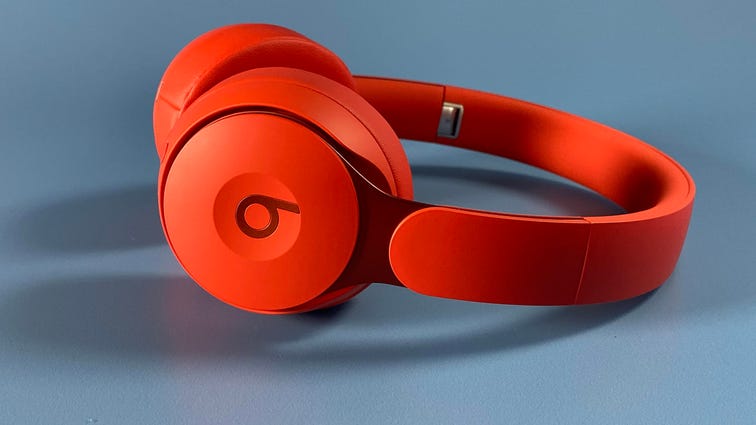
David Carnoy/CNET
The Solo Pro headphones are the first Beats on-ear model to feature active noise cancellation and the first full-size Beats headphones to charge via Lightning. They use the company's Pure Adaptive Noise Canceling (Pure ANC), "derived from the over-ear Studio3 Wireless, with updated tuning to accommodate the on-ear form factor," Beats says. With the tap of a button, you can turn off that noise cancellation to save battery life. Hit the button a second time to enter an audio transparency mode that allows you to hear the outside world, not just the music you're listening to.
Available in multiple color options, these noise-canceling headphones are equipped with six microphones, two of which are beamforming mics that are designed to home in on your voice when making calls or talking to your voice assistant (Apple's H1 chip provides always-on Siri). The sound is smooth and well-balanced with punchy bass that doesn't make music sound boomy. Quite comfortable for an on-ear model, the more compact design travels better than some full-size models on this list. While they're overpriced at $300, we've seen them discounted as low as $150, which makes them a lot more enticing.
Read our Beats Solo Pro first take.
Audiophile-grade sound
Shure Aonic 50

Shure
If you're looking for a very clean-sounding headphone with more of a neutral sound profile, the well-built Shure Aonic 50 is that noise-canceling headphone. The treble is clear and articulate and the bass is well-defined but may be a little underpowered for those who want a little more oomph. The noise canceling is good but not quite up to the level of top noise-canceling models from Bose and Sony that cost a little less.
The headphones fold flat but they're a bit bulky, as is their case. But they work very well as a headset for making calls -- Shure is known for making excellent microphones -- so they're a good work-from-home headphone that's comfortable to wear (but might be a little big for some folks).
While the Aonic 50 suffers a bit from being a little too expensive, it's an excellent headphone that seems built to last. Battery life is rated at 20 hours -- the headphone charge via USB-C -- and it supports a variety of audio codecs, including aptX, aptX HD, aptX Low Latency audio, Sony LDAC, AAC, and SBC.
Top midrange model
Sennheiser 450BT
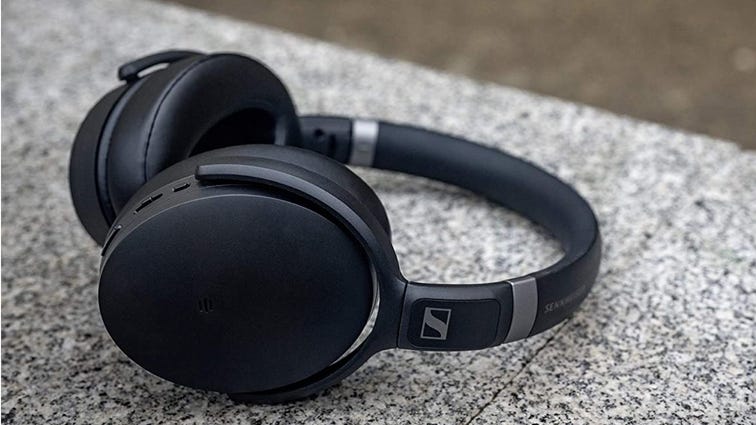
Amazon
Sennheiser updated its well-regarded 4.50BTNC noise-canceling headphones in 2020. The new headphone model is called the 450BT and it has some notable upgrades, including better battery life (up to 30 hours with noise canceling on), USB-C charging, Bluetooth 5.0 with AptX support for devices like the Samsung Galaxy smartphones that support it and more comfortable earpads. The 450BT noise-canceling headphones list for $200, but usually cost around $150 although they have dipped to as low as $100 in flash sales (they're a very good value at that price).
The 450BT headphones don't have quite the clarity or bass definition of Sennheiser's Momentum Wireless 3 headphones, but they cost much less and deliver very good well-balanced sound that's easy to listen to for long periods. I thought the 450BT model also worked quite well as a headset making calls, with the sidetone feature that allows you to hear your voice inside the headphones.
The only potential downside is that regular headphones may not be the most comfortable for some people. I have a smaller head, so they worked fine for me, but they do clamp a bit and those with larger heads may find that to be an issue. Also, while the earpads have been upgraded, they're still covered in a faux leather material that doesn't breathe quite as well as some earpad coverings. Still, if you can't afford premium models in the $300 to $400 range, this is a more affordable option that's well built and delivers premium sound. The headphones fold up to fit into an included soft carrying case.
Luxury looks, luxury sound
Bowers & Wilkins PX7
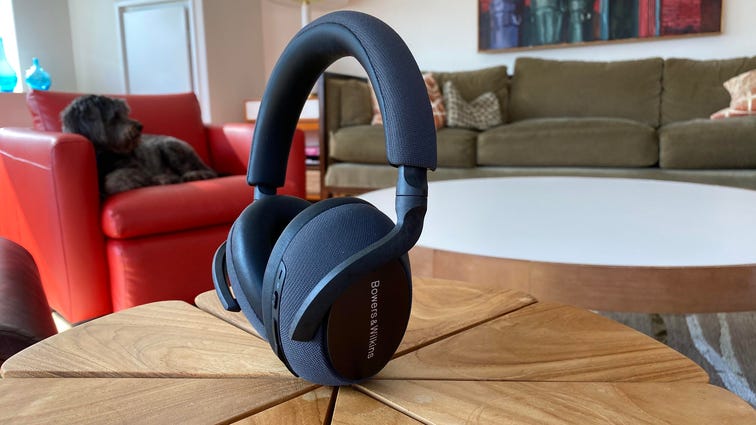
Amazon
I liked Bowers & Wilkins' original PX noise-canceling headphones, but they were slightly lacking in both the earcup comfort and noise-canceling departments. The company's new PX7, released in the fall of 2019, improves on both fronts, with excellent sound, four noise cancellation settings (Automatic, Low, High and Off) and well-padded earcups in a sturdy, eye-catching design. There's also an adjustable ambient transparency mode that allows you to hear the outside world.
The headphones are a tad heavy at 10.7 ounces (304 grams), but the build quality is top-notch -- and it better be considering these are a little pricey at $400. Bowers & Wilkins also makes a more compact on-ear model, the PX5 ($250), which is also quite good. But these do sound a little better.
The sound is rich and detailed, with deep bass that remains well-defined even at high volumes. These are pretty dynamic headphones, with a touch of extra energy in the midhighs. They're not laid-back like the earlier PX5 Wireless and their most direct competitor is probably the Sennheiser Momentum 3 model listed above. That Sennheiser is arguably superior for making calls, but this B&W probably wins on design.
The PX7 headphones support AAC and aptX, use Bluetooth 5.0, charge via USB-C and have up to 30 hours of battery life at moderate volume levels. The noise canceling isn't quite at the level of the Bose or Sony in this roundup, but it's not far off -- as I said, it's improved from the original PX model's noise cancellation.
Frequent-flier-friendly
Bose QuietComfort 20
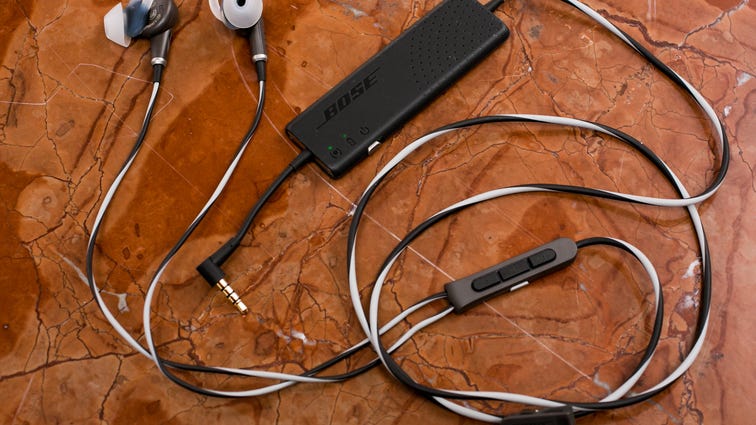
Truth be told, these are the in-ear headphones I usually take with me on plane trips. The noise-canceling earbuds take up very little room in a bag, they don't need a battery (so no worrying about battery life) and they're good for watching in-flight movies, whether on the airline's in-flight entertainment system or your own device. They offer surprisingly good noise cancellation; just don't forget your headphone adapter dongle if you have a phone or tablet that's missing the headphone jack. Note that these earbuds have been out for a while. Since the QuietComfort 20 earbuds are wired rather than wireless, it's unclear whether Bose will update them, but look for them on sale.
Read our Bose QuietComfort 20 review.
CNET TVs, Streaming and Audio
Get CNET's comprehensive coverage of home entertainment tech delivered to your inbox.
More headphone recommendations
- Best true wireless earbuds of 2021
- Best back-to-school headphones for 2021
- Best noise-canceling true wireless earbuds of 2021
- The new Powerbeats 4 are old-school wireless headphones that cost $150
- Best wireless earphones and wireless headphones for making calls
- Best headphones of 2021
- Best cheap wireless noise-canceling headphones under $100
- Best headphones for running in 2021
- Best over-ear headphones of 2021
- Best cheap earbuds and headphones
- Best Sony headphones for 2021
- Best Apple AirPods Max alternatives for less: Sony, Bose, AirPods Pro and more
How To Connect Bose Noise Cancelling Headphones To Iphone
Source: https://www.cnet.com/tech/mobile/best-noise-canceling-headphones/
Posted by: jenkinsneard1953.blogspot.com

0 Response to "How To Connect Bose Noise Cancelling Headphones To Iphone"
Post a Comment